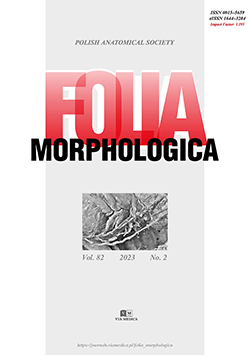 “Treating Cancer-induced bone pain (CIBP) continues to be a major clinical challenge and underlying mechanisms of CIBP remain unclear.
“Treating Cancer-induced bone pain (CIBP) continues to be a major clinical challenge and underlying mechanisms of CIBP remain unclear.
Recently, emerging body of evidence suggested the endocannabinoid system (ECS) may play essential roles in CIBP. Here, we summarized the current understanding of the antinociceptive mechanisms of endocannabinoids in CIBP and discussed the beneficial effects of endocannabinoid for CIBP treatment.
Targeting non-selective cannabinoid 1 receptors or selective cannabinoid 2 receptors, and modulation of peripheral AEA and 2-AG, as well as the inhibition the function of fatty acid amide hydrolase (FAAH) and monoacylglycerol lipase (MAGL) have produced analgesic effects in animal models of CIBP.
Management of ECS therefore appears to be a promising way for the treatment of CIBP in terms of efficacy and safety. Further clinical studies are encouraged to confirm the possible translation to humans of the very promising results already obtained in the preclinical studies.”
https://www.ncbi.nlm.nih.gov/pubmed/31627091
“Thus, cannabinoids may be clinically useful for treating chronic pain and CIBP.”
https://www.sciencedirect.com/science/article/pii/S075333221933731X?via%3Dihub

 “Although a lot of information can be found on the specific dual role of the endocannabinoid system in the emotional-related responses, little is known whether stimulation or inhibition of the CB receptors may affect the activity of the frequently prescribed antidepressant drugs.
“Although a lot of information can be found on the specific dual role of the endocannabinoid system in the emotional-related responses, little is known whether stimulation or inhibition of the CB receptors may affect the activity of the frequently prescribed antidepressant drugs. “Uremia leads to a number of metabolic and hormonal disorders including defective carbohydrate metabolism.
“Uremia leads to a number of metabolic and hormonal disorders including defective carbohydrate metabolism. “Modulation of
“Modulation of  “The endocannabinoid system (ECS) consists particularly of
“The endocannabinoid system (ECS) consists particularly of 
 “Microglia are the resident, innate immune cells of the central nervous system (CNS) and are critical in managing CNS injuries and infections. Microglia also maintain CNS homeostasis by influencing neuronal development, viability, and function. However, aberrant microglial activity and phenotypes are associated with CNS pathology, including autism spectrum disorder (ASD). Thus, improving our knowledge of microglial regulation could provide insights into the maintenance of CNS homeostasis as well as the prevention and treatment of ASD.
“Microglia are the resident, innate immune cells of the central nervous system (CNS) and are critical in managing CNS injuries and infections. Microglia also maintain CNS homeostasis by influencing neuronal development, viability, and function. However, aberrant microglial activity and phenotypes are associated with CNS pathology, including autism spectrum disorder (ASD). Thus, improving our knowledge of microglial regulation could provide insights into the maintenance of CNS homeostasis as well as the prevention and treatment of ASD. “Social anxiety disorder (SAD), or social phobia, is one of the most common types of anxiety disorder, with a lifetime prevalence that can reach 15%.
“Social anxiety disorder (SAD), or social phobia, is one of the most common types of anxiety disorder, with a lifetime prevalence that can reach 15%.